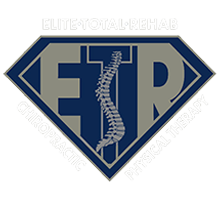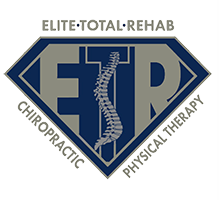Common Mid-Back Complaints in Northwest Chicago IL

Mid-back pain in Northwest Chicago IL can stem from a wide variety of problems from: muscle spasms, thoracic joint dysfunction, and scoliosis, to visceral referral pain (pain referred from organs in the thoracic cavity). A thorough evaluation and review of symptoms by a trained clinician will allow them to better understand where your pain is coming from.
Mid-back pain in Northwest Chicago IL
Pancreatic pain is usually felt over the epigastric (upper central region of the abdomen) area but can also refer to pain in the mid-back at the area of T7. Diagnostic testing may be required to better evaluate the complaint and rule out these referral pain patterns from the organs in the thoracic cavity. The team at Elite Total Rehab can help.
Mid-Back Scoliosis
Scoliosis is an abnormal curvature of the spine. There are several types of scoliosis: idiopathic, congenital, neuromuscular, and degenerative. Scoliosis most commonly affects the thoracic and thoracolumbar spine. Radiographs of the mid-back will show a visible lateral curve resembling an “S”. Structural (abnormalities in the bone) scoliosis’ should be evaluated and monitored by an orthopedic physician, for possible bracing to slow down the progression of the curve. Non-structural scoliosis usually due to joint dysfunction and or muscle imbalance can be treated with manual therapy with positive results.
Spasm of Thoracic Spinal Muscles
Muscles in the thoracic spine become tight and people often refer to them as “knots”. These knots are actually called “trigger points”. Trigger points usually follow a pattern and can be very painful in their active state. Muscles that can be affected in this region include:
- Lower trapezium Muscle
- Rhomboid Major/Minor Muscle
- Latissimus dorsi Muscle
- Thoracic Erector Spinae Muscle
- Thoracic Joint dysfunction
Joint dysfunction is a loss in joint motion. The body is designed to have certain amounts of motion at each vertebral level. For example, the thoracic spine has twelve bones in its region. If a loss in joint motion is found between the T6 and T7 levels the joints above and below will move more freely (hyper-mobile) to compensate for the loss of motion between the two levels. This loss is joint motion (hypomobility) if not treated may predispose the segment to advancement in arthritic changes.
Thoracic Outlet Syndrome
This syndrome, usually referred to as TOS, compresses the brachial plexus, which is a network of nerves and arteries, as it passes through the neck into the arm. Patients will usually complain of numbness and tingling in the upper extremity which can have a similar presentation to a cervical disc herniation. The key to differentiating the two conditions is orthopedic testing and diagnostic testing.
Monday
9:00am - 6:00pm
Tuesday
9:00am - 6:00pm
Wednesday
9:00am - 6:00pm
Thursday
9:00am - 6:00pm
Friday
9:00am - 6:00pm
Saturday
By Appointment
Sunday
Closed
Elite Total Rehab
7008 W Higgins Ave
Chicago, IL 60656



